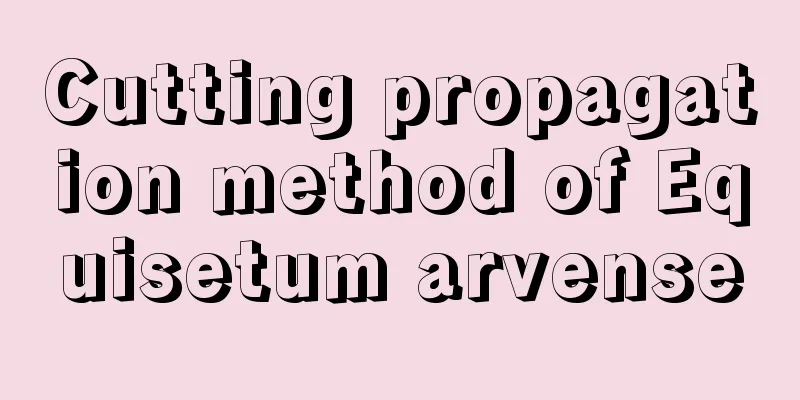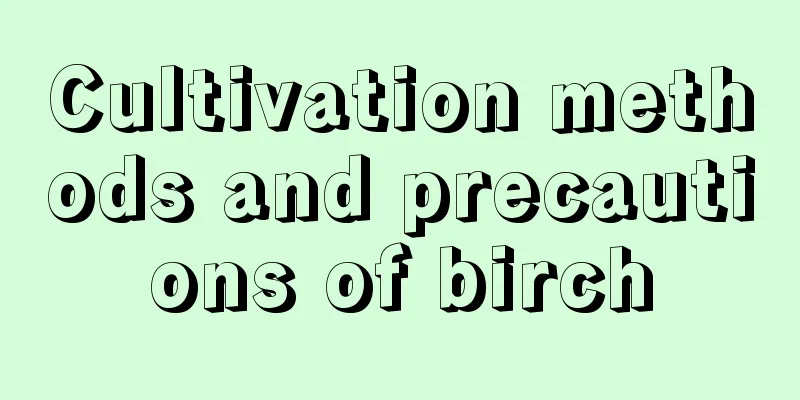Cultivation methods and precautions of black persimmon

1. Maintenance methods1. Flower pot: Black persimmon is mostly used in bonsai making, so it is best to choose a flower pot with strong air permeability and good water absorption capacity. Ordinary ceramic pots, clay pots, stone pots, and porcelain pots can all be used for planting, among which purple clay pots are the most popular. 2. Substrate: Black persimmon can also grow in relatively poor soil. If conditions permit, you can choose soil with strong air permeability and good fertility. You can mix leaf mold and nutrient soil and then plant it. 3. Water: Black persimmon likes to grow in a humid environment. You can water it in small amounts every 2-3 days to keep the soil slightly moist. In the hot summer, you can increase the amount and frequency of watering appropriately. You can also use a watering bottle to spray a small amount of water around to cool down and replenish moisture for the leaves. 4. Nutrients: Apply more nitrogen fertilizer when new branches grow in spring to promote healthy growth of branches. During the growing period, more phosphorus fertilizer can be applied, and then wood ash can be sprinkled every once in a while. 2. Breeding techniques1. Sowing: The black persimmon fruits will mature in autumn. After picking the ripe fruits, take out the seeds and dry them. Try to dry them in a ventilated place to prevent the seeds from rotting. Wait until the spring of next year, prepare fertile and moist soil and then plant it. 2. Cutting: It is mainly carried out in spring or summer every year. Prepare fertile and moist soil before cutting. Cut the branches from the mother plant and insert them directly into the soil. 3. Problem diagnosis and treatment1. Angular spot disease: If the fruit becomes soft or falls prematurely, it may be diseased. July and August every year are the outbreak period of angular leaf spot disease. Before that, May and June are roughly its incubation period. You can spray 75% of thiophanate-methyl diluted one thousand times on the back of the leaves for prevention and control. 2. Peach borer: The peach borer overwinters in cocoons every year and feeds on fruits. There is a major outbreak in August and September every year. In the early stages of the outbreak, dichlorodiphenyltrichloroethane can be mixed with water and sprayed. IV. Other issues1. Is it poisonous? The fruit is poisonous. The shape of the fruit is similar to that of common edible persimmons, which may cause accidental ingestion. You should try to stay away from it. Be especially careful when bringing children to watch, so as to avoid unnecessary trouble. 2. Flowering period: Every spring is the flowering season for black persimmon. The flowers have charming fragrance when they bloom. Most of them are white and highly ornamental. |
<<: Lettuce cultivation methods and precautions
>>: Yarrow cultivation methods and precautions
Recommend
These wild flowers are more beautiful than gardenias and roses. If we don’t pick them now, they will be picked by others!
Viola yedoensis Daily maintenance: 1. Viola yedoe...
What are the effects and functions of palm tree seeds? Can they be soaked in water or wine?
1. Efficacy and Function 1. Stop bleeding: It is ...
How to prune potted baby's breath
How to prune the branches of potted baby's br...
How to take care of spider plants after they bloom
1. The characteristics of this plant First, we ne...
How to grow Lycoris radiata? Is Lycoris radiata poisonous?
1. Breeding methods 1. Soil: It refers to the red...
The efficacy and function of Lianchi
1. Antibacterial Lianchi has antibacterial effect...
How to grow ground-planted succulents quickly
1. Breeding methods: 1. Breeding environment: At ...
What is the best season to plant konjac?
The best season and time to plant konjac Konjac c...
Blue butterfly cutting propagation method
Blue butterfly cutting propagation time Blue butt...
It is best to water cucumbers every few days.
Introduction to watering cucumbers Cucumbers like...
How to prune Pteris fern? Pruning time and method
Pteris fern pruning time Autumn is the best time ...
The efficacy and function of shepherd's purse
1. Anti-cancer Shepherd's purse is rich in vi...
Can ammonium chloride be used as fertilizer?
Ammonium chloride as fertilizer Ammonium chloride...
Methods of dividing pots and daily maintenance of copper coin grass
1. Stop watering Stop watering the pennywort for ...
What to do if the leaves of azalea turn red
1. Low temperature Low temperature is a very impo...









